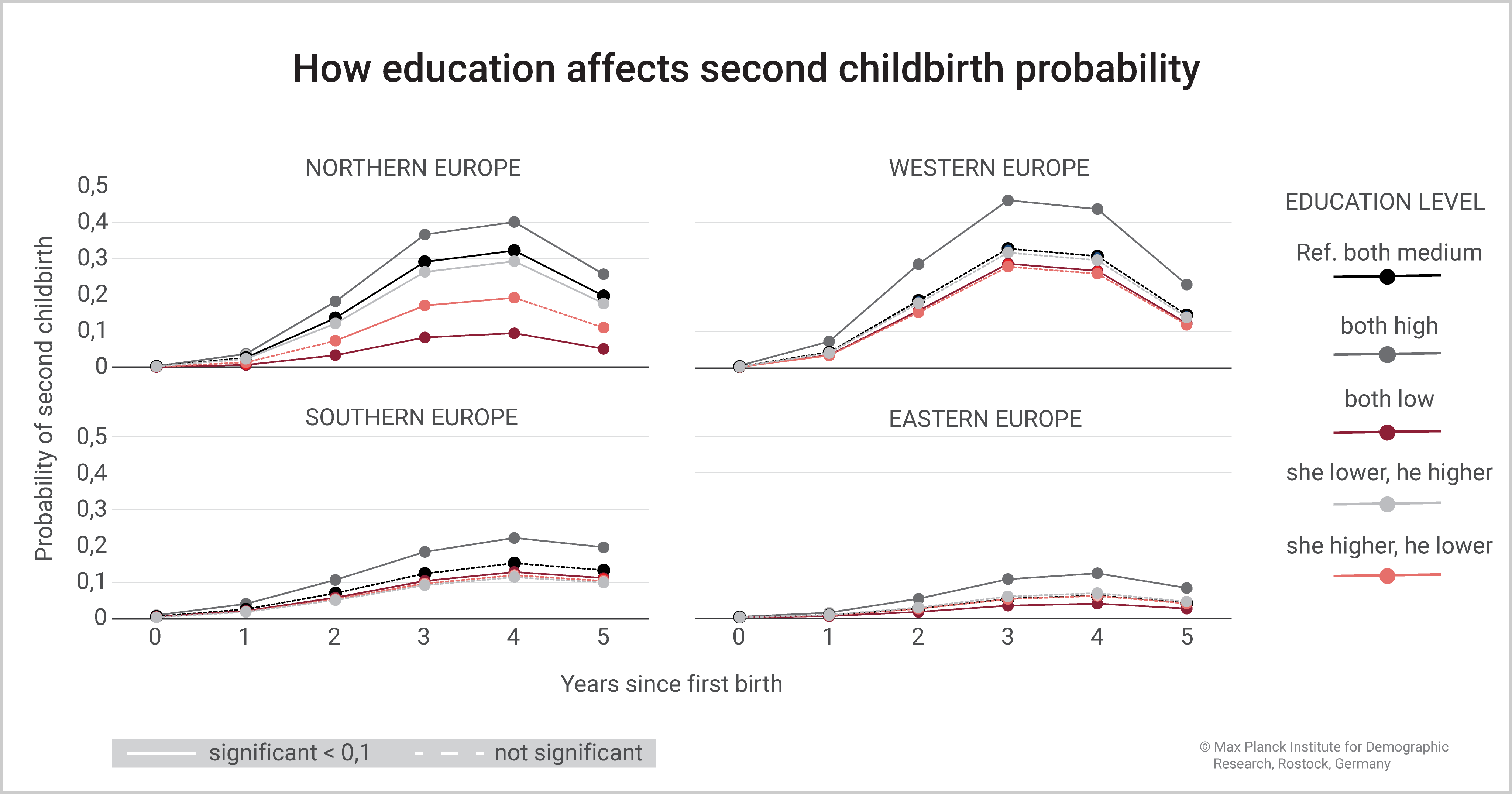July 13, 2022 | Press Release
How Education Affects Family Size

Couples with a parent of low schooling often have a smaller family than two highly educated partners. © iStockphoto.com/Noel Hendrickson
Siblings are born less often in couples where at least one parent has a low level of education than in couples where both partners have completed tertiary education. This is the result of a study by the Max Planck Institute for Demographic Research. The study is based on a data analysis of 22 European countries.
The question of when and how many children are born to a couple always hinges on the couple's joint resources (along with other factors): How much money, how much time, how much support, and how many physical and psychological resources does the couple have? Some of these resources are closely linked to income, lifestyle, gainful employment, and thus to the level of education both partners have completed.
For parents with a college or university degree, we already know quite well from previous studies how an individual’s education and that of the partner can affect family formation. But what about the lowly educated? These often have an income below average. To them, the question of what education level the partner brings to the partnership may be more critical in the decision against or in favor of having another child.
To pursue this question, Natalie Nitsche from the Max Planck Institute for Demographic Research, Anna Matysiak from the University of Warsaw, Jan Van Bavel from the University of Leuven, and Daniele Vignoli from the University of Florence analyzed data from the EU-SILC panel study (European Statistics on Income and Living Conditions). The panel study includes information on all members of a household and provides detailed information on the level of formal education and the number of children the respondents have.
Using these data, the researchers calculated the likelihood of observing progression to second or third birth among couples that have different educational backgrounds. The focus in on siblings because the parent’s educational pairing usually correlates more strongly with the birth of another child than with first child birth.
The researchers divided the couples into five different groups: couples where both parents have either high, medium, or low formal education, and couples where the female is low-educated and the male is high-educated and vice versa. The definition of the education levels corresponds, as usual, to international ISCED classification: Individuals who have not completed secondary school are considered to have a low level of formal education; those with tertiary education are rated as being highly educated. In between are those with medium education, namely ISCED groups 3 and 4.
When calculating the second and third birth rate in different partner constellations, the researchers also considered the age of the respondents, the age gap between the partners, as well as the peculiarities of individual countries or individual survey time-points.

Download Figure (PNG File, 205 kB)
The true differences between the various partner constellations are substantial, especially in Northern Europe: There, the probability of second child birth with two highly educated partners is about four times higher two to five years into first birth than it is among couples with two partners of low formal schooling. But other parts of Europe, too, reveal that the second birth rate of couples with one or two low-educated parents is much lower than it is for a pair with two tertiary-educated partners. This also applies to third and more births in Western Europe.
Another interesting finding is that the educational pairing of couples with at least one low-educated partner did not influence the rate of second childbirth; only in Northern Europe was the birth rate among couples with a partner of low schooling higher when the educational attainment of the second partner increased.
Further analyzes must show whether these differences can truly be attributed to the fact that couples with at least one low-educated partner have fewer financial resources at hand to afford having more children: It is also conceivable that marital unions between low-educated couples are more unstable or lack in other social or health resources, the authors write.
Original Publication
Nitsche, N., A. Matysiak, J. van Bavel, D. Vignoli: Educational Pairings and Fertility Across Europe: How Do the Low-Educated Fare? Comparative Population Studie. (2021) DOI: 10.12765/CPoS-2021-19